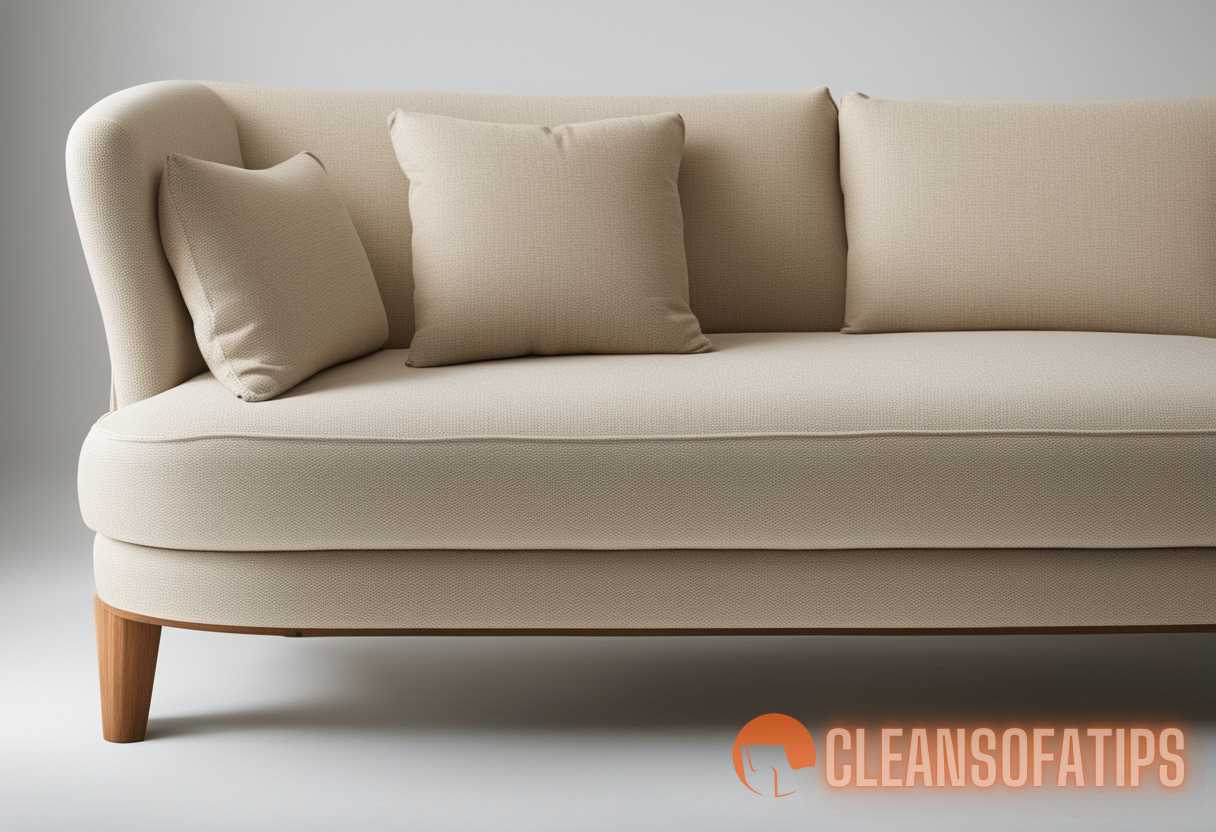Nature’s Chemistry: Crafting Eco-Conscious Upholstery Solutions for the Modern Home
In today’s environmentally conscious world, the push towards sustainable living extends far beyond recycling and reducing waste. In the realm of interior design, eco-conscious upholstery has emerged as a trend that not only benefits the planet but also enhances our living spaces with natural elegance.
upholstery solutions for the modern home. We will explore the various materials, DIY methods, and techniques that emphasize eco-friendliness without compromising on style or comfort.
Understanding Eco-Conscious Upholstery
The Role of Natural Chemistry in Eco-Conscious Upholstery
The concept of eco-conscious upholstery revolves around the use of natural, biodegradable, and renewable materials that minimize environmental impact. Nature’s chemistry provides an abundant supply of raw materials that can be transformed into beautiful, functional upholstery.
The Chemistry Behind Natural Fibers
Natural fibers originate from plants and animals, offering a renewable and biodegradable alternative to synthetic materials. Key examples include:
- Cotton: Derived from the cotton plant, it is soft, breathable, and highly versatile.
- Hemp: Known for its durability and resistance to mold, hemp is an excellent choice for upholstery.
- Wool: Sourced from sheep, wool is naturally fire-resistant and offers superb insulation.
- Jute: A long, soft, and shiny vegetable fiber that can be spun into coarse threads.
- Linen: Made from the flax plant, linen is strong, absorbent, and environmentally friendly.
These natural fibers contain cellulose or protein polymers, providing strength and flexibility while being harmless to the environment. They are integral to crafting eco-conscious upholstery that aligns with our commitment to sustainability.
The Benefits of Eco-Conscious Upholstery
Adopting eco-conscious upholstery in your home yields a multitude of benefits, such as:
- Reduced Environmental Footprint: Utilization of renewable resources curtails the reliance on non-renewable materials, helping to preserve the planet.
- Biodegradability: Natural fibers decompose more readily, reducing landfill waste.
- Health Advantages: Natural materials are less likely to off-gas harmful chemicals, promoting healthier indoor air quality.
- Ethical Production: Many eco-conscious upholstery materials support fair trade practices and humane working conditions.
- Durability and Longevity: High-quality natural fibers often outlast synthetic alternatives, providing lasting beauty and functionality.
DIY Eco-Conscious Upholstery Solutions
Getting Started with DIY Upholstery Projects
Tackling eco-conscious upholstery projects at home can be both rewarding and environmentally responsible. Here’s a step-by-step approach to get you started:
Tools and Materials Needed
To embark on your DIY upholstery journey, gather the following essentials:
- Basic Tools: A staple gun, upholstery needles, scissors, measuring tape, and a sewing machine.
- Eco-Friendly Materials: Natural fabrics like organic cotton, hemp, or linen; biodegradable foam; and non-toxic adhesives.
- Upcycled Elements: Repurpose old furniture frames and stuffing to minimize waste.
Step-by-Step DIY Upholstery Guide
1. Choose Your Fabric
Select natural, biodegradable fabrics that align with the principles of eco-conscious upholstery. Organic cotton, recycled wool, or hemp are all excellent choices. Ensure the fabric is durable enough to withstand regular use.
2. Prepare the Frame
Inspect the furniture frame for stability and make necessary repairs. Sand any rough edges and apply a non-toxic, water-based sealant to protect the wood.
3. Cut the Fabric
Measure the dimensions of your furniture and cut the fabric accordingly, allowing for extra material to tuck and staple. Precision in measurement ensures a neat, professional finish.
4. Attach the Fabric
Using a staple gun, securely attach the fabric to the frame. Start from the center and work outwards to avoid wrinkles. Pay special attention to corners and edges for a seamless appearance.
5. Add Natural Padding
Opt for biodegradable foam or natural fiber padding like wool or cotton. These materials offer comfort while aligning with your eco-conscious goals.
6. Apply Finishing Touches
Once the fabric is in place, add buttons, tufts, or other embellishments as desired. Use natural threads and non-toxic adhesives to maintain an eco-friendly profile.
Chemical-Free Cleaning and Maintenance
Maintaining your eco-conscious upholstery is crucial for longevity and aesthetics. Here are chemical-free cleaning solutions:
Regular Maintenance Tips
- Vacuum Regularly: Use a soft brush attachment to vacuum upholstery and remove dust and debris.
- Spot Cleaning: Tackle spills immediately with a mixture of water and mild, organic soap.
- Sunlight Exposure: Periodically air out cushions in the sun to eliminate odors naturally and kill bacteria.
DIY Cleaning Solutions
Utilize these DIY cleaning solutions for maintaining pristine eco-conscious upholstery:
1. Vinegar and Water Solution
Mix equal parts white vinegar and water in a spray bottle. Lightly mist the upholstery and blot with a clean cloth. Vinegar’s acidity helps dissolve dirt and neutralize odors.
2. Baking Soda Deodorizer
Sprinkle baking soda over the upholstery, let it sit for 15-20 minutes, and then vacuum. Baking soda effectively absorbs odors and freshens fabrics.

3. Lemon Juice and Water Mixture
Combine lemon juice and water in a spray bottle for a fragrant, bleaching agent that removes stains and brightens fabrics naturally.
Exploring Advanced Eco-Conscious Upholstery Techniques
Natural Dyeing Processes
One exciting aspect of eco-conscious upholstery is incorporating natural dyes. These colors are derived from plants, minerals, and insects, offering a sustainable alternative to synthetic dyes.
Popular Natural Dye Sources
- Madder Root: Yields vibrant reds and pinks.
- Turmeric: Produces rich yellows.
- Indigo: Provides deep blues.
- Onion Skins: Imparts earthy browns and oranges.
- Walnut Hulls: Create natural brown hues.
DIY Natural Dyeing Steps
- Prepare the Fabric: Pre-wash the fabric to remove impurities and achieve even dye absorption.
- Create a Mordant: Use natural mordants like alum or iron to fix the dye to the fabric. Boil the fabric with the mordant for about an hour.
- Extract Dye: Simmer the natural dye source in water to extract the color. Strain the mixture to remove solids.
- Dye the Fabric: Soak the fabric in the dye bath, stirring regularly to ensure even coloring. The duration will depend on the desired color intensity.
- Rinse and Dry: Rinse the fabric with cold water until the water runs clear, then air-dry it out of direct sunlight.
Sustainable Upholstery Fillings
Beyond fabric, the choice of upholstery fillings is crucial. Opt for eco-friendly alternatives to conventional foam and synthetic fibers:
1. Natural Latex Foam
Harvested from rubber trees, natural latex foam is biodegradable, hypoallergenic, and highly durable, making it an excellent sustainable choice.
2. Kapok Fiber
Derived from the seed pods of the kapok tree, this fiber is naturally buoyant, supportive, and biodegradable. It’s an ideal filling for cushions and pillows.
3. Horsehair
Used traditionally for upholstery, horsehair is resilient, breathable, and biodegradable. It provides excellent support and comfort while maintaining an eco-friendly profile.
4. Coconut Coir
Extracted from coconut husks, coir is durable, moisture-resistant, and naturally mold-resistant, making it perfect for eco-conscious upholstery projects.
Challenges and Considerations in Eco-Conscious Upholstery
Sourcing Ethical Materials
Finding ethical and sustainable materials demands diligence. Ensure suppliers adhere to environmental standards and fair trade practices. Look for certifications such as:
- Global Organic Textile Standard (GOTS): Ensures organic status of textiles, from harvesting raw materials through environmentally and socially responsible manufacturing.
- Forest Stewardship Council (FSC): Guarantees that wood products come from responsibly managed forests.
- OEKO-TEX Standard 100: Certifies that textiles are free from harmful substances.
Durability Versus Sustainability
Balancing durability with sustainability can be challenging. High-quality, natural materials may come at a higher cost but often provide longer-lasting upholstery that reduces overall waste.
Allergy Concerns
Natural materials can sometimes trigger allergies. Ensure proper ventilation and regular cleaning to minimize allergens. Opt for hypoallergenic materials like organic cotton or natural latex foam.
Case Studies and Success Stories
Eco-Friendly Furniture Brands
Several furniture brands have embraced eco-conscious upholstery, setting examples for sustainability in the industry:
1. Joybird
Joybird is committed to using responsibly sourced materials and eco-friendly manufacturing processes. Their handcrafted furniture features FSC-certified wood and recyclable materials.
2. Medley
Medley offers a range of sustainable furniture using natural, non-toxic materials like organic cotton, wool, natural latex foam, and FSC-certified hardwoods.
3. Sabai
Sabai focuses on sustainability, affordability, and style. Their furniture is made from recycled and renewable materials, and they offer a closed-loop program to prevent products from ending up in landfills.
DIY Enthusiast Stories
Many DIY enthusiasts have successfully transformed their homes using eco-conscious upholstery techniques. For instance, Jane Doe, a sustainability advocate, revamped her living room with hemp fabric, natural latex foam, and upcycled wood frames, achieving both style and eco-friendliness.
Conclusion
Embracing nature’s chemistry** to craft eco-conscious upholstery solutions for your modern home is an inspiring and impactful choice. By selecting natural, renewable materials and employing sustainable techniques, you contribute to a healthier planet and create a beautiful, comfortable living environment.
For more detailed steps and insights on DIY eco-upholstery, explore our related articles:



